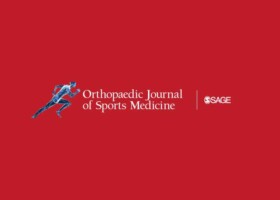
Authors:
Horan MP, Hanson JA, Rakowski D, Patel R, Vidal LB, Millett PJ
Abstract:
Background:
Rotator cuff tears are common in the elderly population and are associated with increased pain, decreased function, and decreased enjoyment of recreational activities.
Purpose:
To evaluate clinical outcomes at a minimum of 5 years after arthroscopic repair of full-thickness rotator cuff tears in recreational athletes aged ≥70 years at the time of surgery.
Study Design:
Case series; Level of evidence, 4.
Methods:
Included were recreational athletes aged ≥70 years who underwent arthroscopic rotator cuff repair (RCR) from December 2005 to January 2016. Patient and surgery characteristics were collected prospectively and retrospectively reviewed. Patient-reported outcome (PRO) scores utilized were the American Shoulder and Elbow Surgeons (ASES), Single Assessment Numeric Evaluation (SANE), the shortened version of Disabilities of the Arm, Shoulder and Hand score (QuickDASH), 12-Item Short Form Health survey (SF-12) questionnaire (Physical Component Summary and Mental Component Summary), and patient satisfaction. Kaplan Meier survivorship analysis was performed, with failure defined as revision RCR or retear on magnetic resonance imaging (MRI).
Results:
Overall, 71 shoulders (n = 67 patients [44 men, 23 women]; mean age, 73.4 years [range, 70.1-81.3 years]) were included in this study. Follow-up data was obtained for 65 of the 69 available shoulders (94%) at a mean of 7.8 years (range, 5-15.3 years). Mean age at follow-up was 81.2 years (range, 75.7-91.0). One RCR was revised after a traumatic accident, and another had a symptomatic, MRI-confirmed retear. One patient had lysis of adhesions for stiffness 3 months postoperatively. All PRO scores improved from pre- to postoperatively—ASES, from 55.3 to 93.6; SANE, from 62 to 89.6; QuickDASH, from 32.9 to 7.3; and SF-12 Physical Component Summary, from 43.3 to 53 (P < .001 for all)—and the median satisfaction score was 10 out of 10. Postoperatively, 63% of the patients returned to their original fitness program and 33% of patients modified their recreational activity. Survivorship analysis showed a 98% survival rate at 5 years and a 92% rate at 10 years.
Conclusion:
Sustained improvement in function, reduced pain, and return to activities was seen after arthroscopic RCR in active patients ≥70 years old. Despite one-third of patients modifying their recreational activity, the cohort reported high levels of satisfaction and general health.
For the complete study: Active Seniors Demonstrate Improved Outcomes & High Survivorship 5 years after Arthroscopic Rotator Cuff Repair
